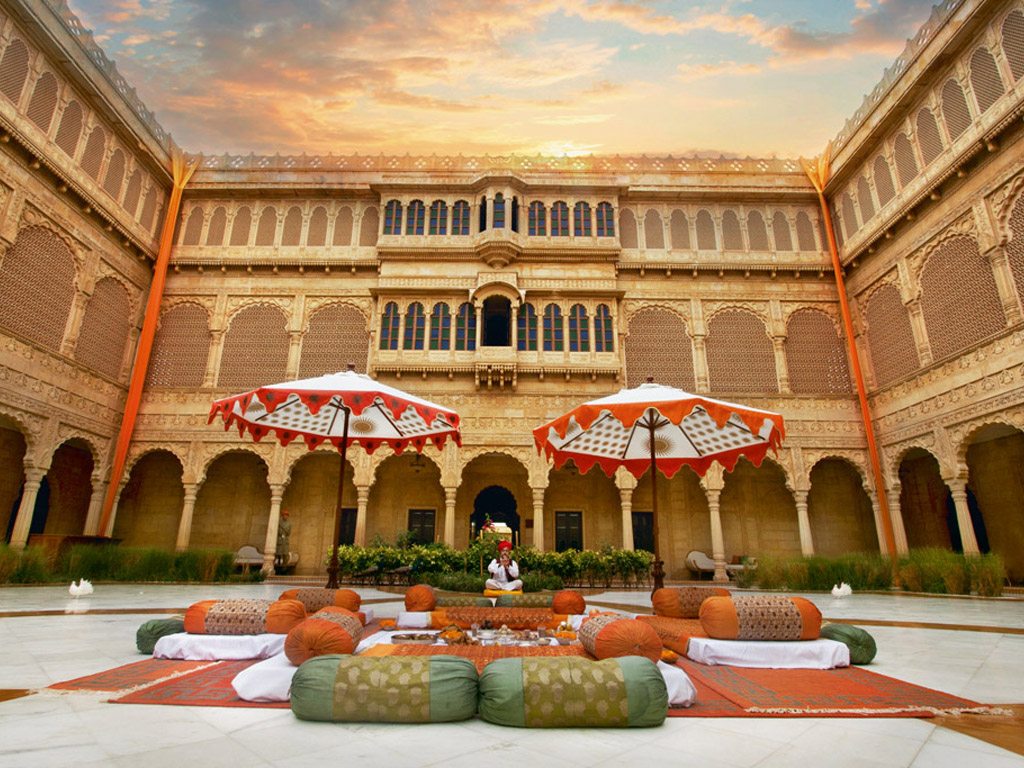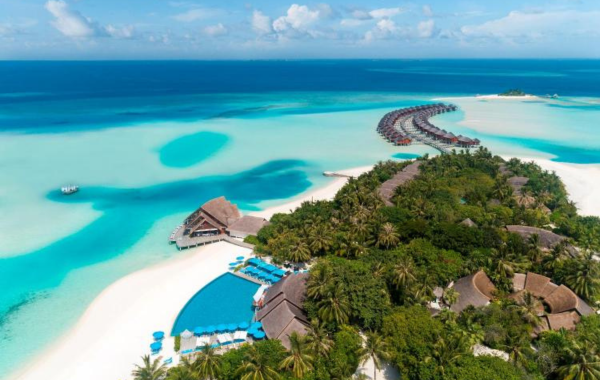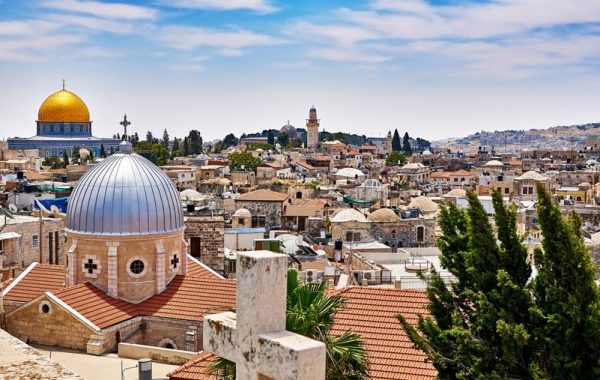The central courtyard is the venue for a heart-stopping Halwaii breakfast, as well as for musical evenings with the hotel’s Manganiyar musicians, and various other events. Photo courtesy Suryagarh
Rajasthan’s trending grand heritage hotel’s claim to fame should be its stunning interiors meld with history and culture, panoramic views of the Thar Desert, and re-adaptation of royalty through local art, craft, and cuisine—and not just a Bollywood wedding.
I’d never been to the Thar Desert before, but I had a picture of it in my mind. A stereotypical image of a stark, sandy land with barely a blade of grass in sight. A place with only the occasional flicker of life or movement. And hot, furiously hot.
Driving from Jodhpur to Jaisalmer on a February morning, much of the countryside appeared just as I’d pictured it: parched, yellow-brown earth whizzing past the car window. Mostly it was desolate, dotted with occasional bursts of green acacia scrub. At some point on the 3.5-hour ride I nodded off. When I awoke, I saw a citadel in the distance, looming out of the haze of dust and flat nothingness. It was a majestic fort of gold sandstone.
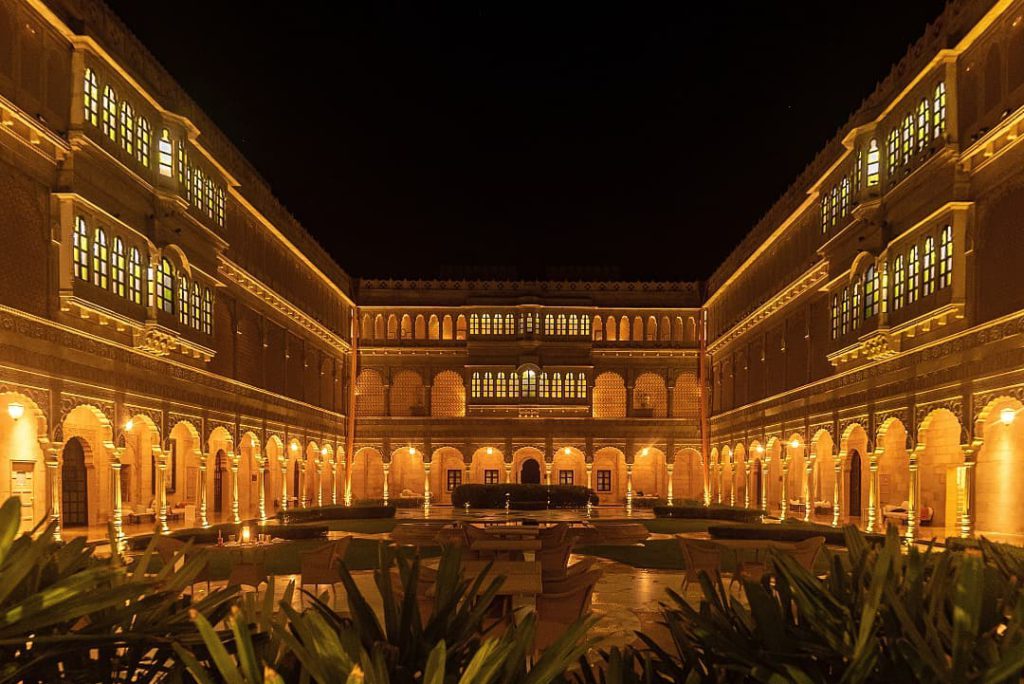
Entering the grand fortress of the Suryagarh hotel, we were welcomed with a shower of rose petals. The lobby and its anteroom are dressed like a royal residence, with traditional shields and swords decorating the walls. The decor is full of design elements incorporating the most-loved of Rajasthani aesthetics. Rooms are large and handsomely decorated in earthy tones using handwoven fabrics. The bathroom of my suite was the size of a Mumbai studio apartment and over-the-top luxurious. Amid the grandeur, it was the little touches that made Suryagarh stand out over other luxury hotels. I appreciated that the flowers in my room were flaming orange Indian marigold grown in the garden outside, not orchids from Bangkok or tulips from Holland. The second arrangement, in an earthen pot, was a bunch of dried white desert flowers. The bedroom wall was adorned with a hand-block print design. Best of all, the dessert treat left in my room each night was a heavenly Rajasthani halwa or mithai, not Belgian chocolate.
Over the next two days I took a series of Suryagarh’s curated trips through the desert. The khadeens were a big surprise—these massive, green oases punctured the beige of the landscape challenging the image of the desert I had. The vast tracts of low-lying aagor land capture rainwater and are used as community-owned and operated farms. As we drove deeper into the desert we saw other, smaller oases with goats or sheep grazing, age-old khejri trees, watering holes, and wells. My preconceived notions about the scorched Thar started evaporating in the desert sun.
I watched as an antelope raced past us, clearing a four-foot bush with a graceful leap. In the distance, as heat waves rose off the desert floor, I blinked to focus on a train of camels. We edged nearer and stopped to observe the hardy soldiers, graceful long-time residents of this difficult terrain.
On another excursion, we heard bone-chilling tales at the deserted town of Kuldhara, and examined unique cenotaphs of the Paliwals at their cemetery on an ancient trade route. Our guide pointed out a carved stone pillar (govardhan), a water marker usually aligned with the constellations, that helped ancient travellers find their way.
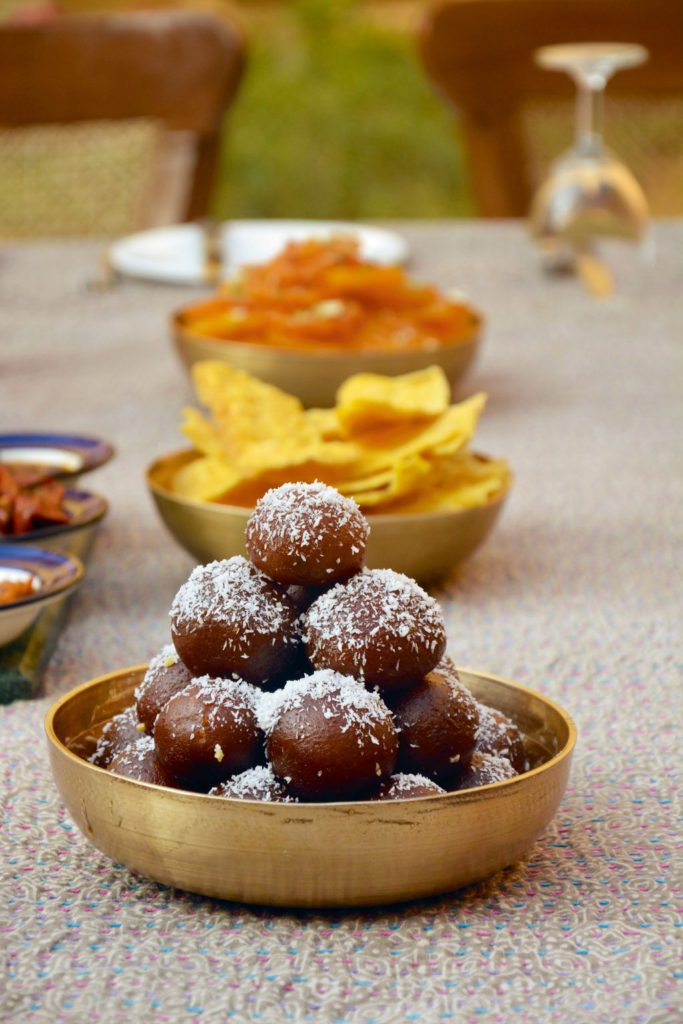
Back at Suryagarh, I feasted on meals of both Marwadi and Western classics. The hotel earnestly embraces the old adage that the way to a guest’s heart is through her stomach. The kitchen belted out startlingly good fare, all served with unaffected flair and genuine pride. In fact, great attention is paid to the dining experience. Besides eating in the restaurants, I enjoyed breakfast at dawn with peacocks at the old Khaba fort in the desert, and dined in the various gardens on the property. I particularly enjoyed dinner on a stunning secluded sand dune. As spirited folk singers crooned and swayed, chefs brought out delight after delight. Beyond our little camp was a vast, hypnotising darkness. The buzz of hotel guests enjoying their dinner faded into a dream-like swirl behind me, as I spotted a faraway campfire. What a thriving land of depth and variety—it really was unlike anything I’d envisioned.
Another memorable meal at Suryagarh was the Halwaii breakfast served in the middle of the cosy, central courtyard. As I entered the courtyard the sweet sound of a flute floated around. Emanating from one of the jharokhas above, it made me look up and admire the carved jali windows and other classic Rajathani elements of the structure. The meal itself was a sensational variety of local dishes both savoury and sweet and freshly-squeezed juices. Its colourful presentation was as pleasing to the eye as the flavours were to my plate.

The sumptuous meals inspired me to examine the Bageecha, the hotel’s kitchen garden. Opposite it I noticed another, smaller, but just as pretty fortress. Perhaps it was the exclusive residence of owner Manavendra Singh Shekhawat. To my surprise, it was the staff housing quarters. I was happy to note that the hotel takes care of its staff. The Residences, the exclusive guest accommodations are close to the main building. Each has a private pool and exudes luxury. The icing on top is that they overlook a sweeping panorama of the desert.
Every hotel strives to be different, but few actually are. Suryagarh manages to achieve that distinctiveness by offering guests a rare cultural experience. What was also amply clear was that the owners and staff of this hotel embrace and are in love with this desert, and very quickly, they made me fall in love as well.
THE GUIDE
Accommodation
There is a touch of opulence in every room at Suryagarh, right from the 77 elegant palace rooms to the four stand alone accommodations called The Residences. Local, traditional elements in the construction and décor blend perfectly with modern amenities. Dining options are numerous; The Legend of Marwad restaurant serves cuisine born in the kitchens of the royal households of Marwar. (02992-269269; www.suryagarh.com).
Getting there
Suryagarh is located on the outskirts of Jaisalmer, Rajasthan. It is 760 km/12 hr southwest of Delhi. The city of Jodhpur lies 280 km/5 hr to the southeast, and is the closest airport and railway junction.
Trending on TFN
The 23 Best Places To Go In 2023


